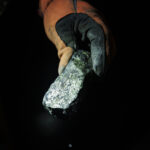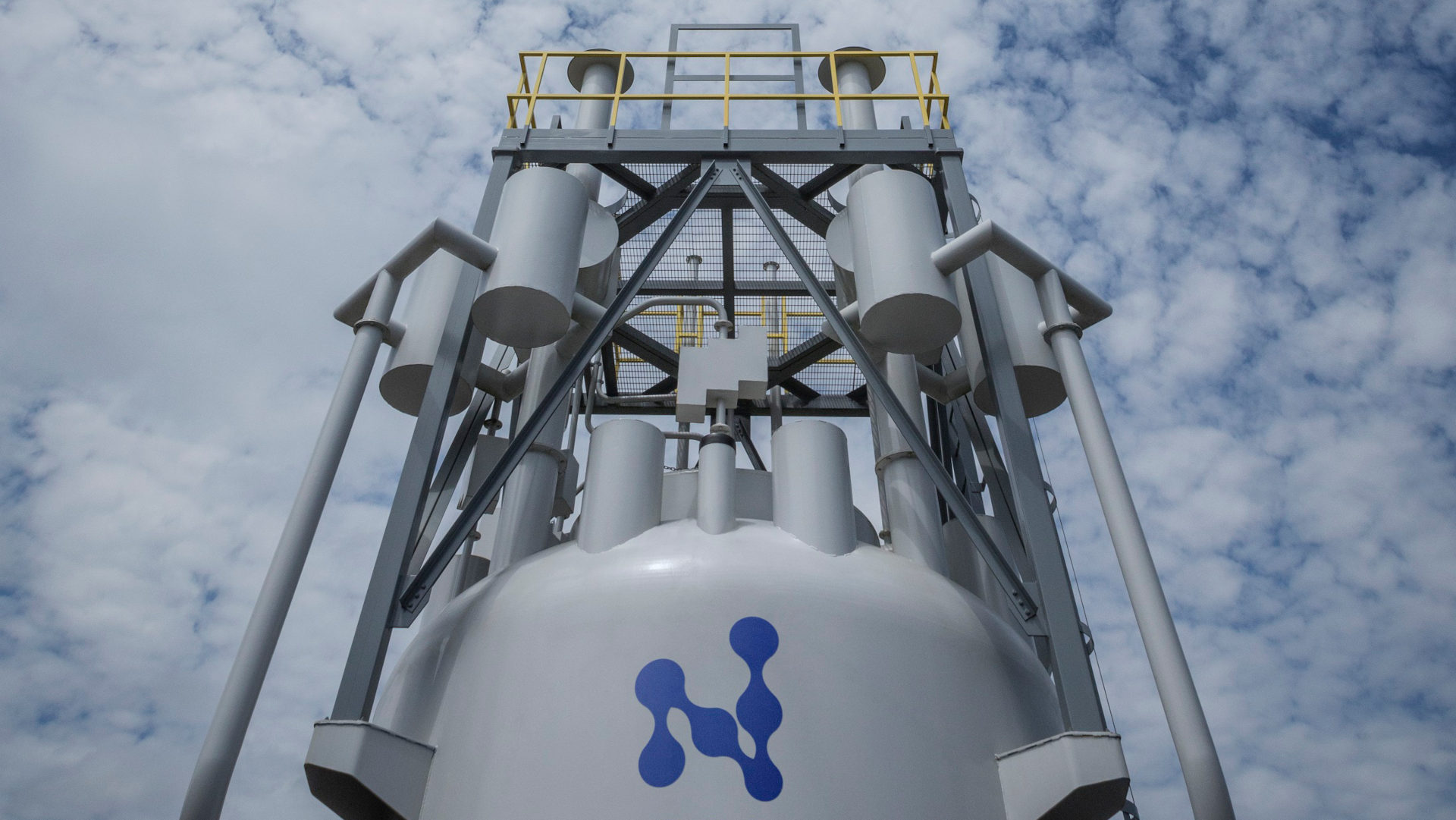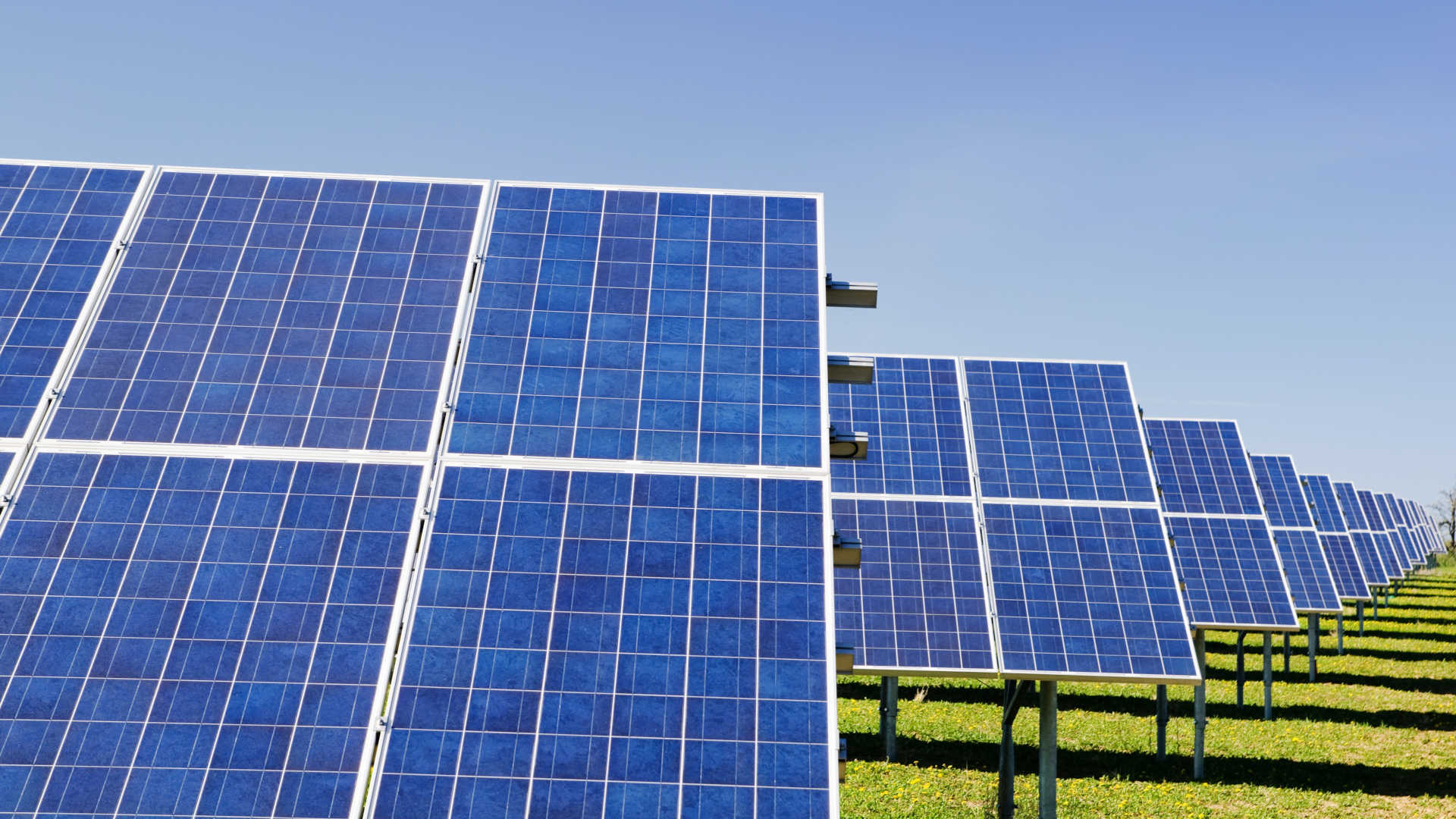In recent years, the nuclear power lobby and its advocates have begun to sing a new song. They have bailed on the monstrous reactors of the 20th century — not because of safety or toxic waste concerns, but because of the reactors’ exorbitant expense and ponderous rollout schedules. And they have switched their allegiance to a next generation nuclear fission technology: small modular reactors, which they claim will help rescue our warming planet, as well as the nuclear power industry— once they exist.
Respected thinkers such as former U.S. president Barack Obama, French president Emmanuel Macron, and Microsoft co-founder and philanthropist Bill Gates have toasted the idea of small modular reactors, or SMRs, as a potentially reliable, almost-emissions-free backup to intermittent renewable energy sources like wind and solar. Advocates claim that because SMRs will be smaller than the giants that currently dominate horizons, they will be safer, cheaper, and quicker to build. Although SMRs will have only a fraction of the power-generating capacity of traditional nuclear power reactors, proponents envision that they will, one day, be assembled in factories and transported as a unit to sites — like Sears’ mail-order Modern Homes of the early 1900s.
Currently, half of the states in the EU, both major political parties in the U.S, and the five BRICS nations — Brazil, Russia, India, China, and South Africa — have indicated that they want to split atoms for the purpose of generating energy. U.S. President Joe Biden included billions of dollars in tax credits for nuclear energy in the Inflation Reduction Act and the Infrastructure Investment and Jobs Act. Gates has gone so far as to invest a chunk of his fortune in a firm he founded, TerraPower, a leading nuclear innovation company. But despite the prodigious chatter, the endeavor to blanket the Earth with SMRs is a Hail Mary pass that’s very unlikely to succeed.
Granted, it is certainly a step in the right direction that most observers now see the postwar, giga-watt-scale water-cooled reactors as obsolete. When constructed new, these behemoths generate electricity at up to nine times the cost of large-scale solar and onshore wind facilities, and can take well over a decade to get up and running. Perhaps for this reason, there has been one, and only one, new nuclear power project initiated in the U.S. since construction began on the last one 50 years ago: a two-reactor expansion of the Vogtle Electric Generating Plant in Georgia. The first of the reactors came online this year — seven years behind schedule. The staggering $35 billion cost for the pair is more than twice the original projection.
But SMRs are just as likely to face similar delays and cost overruns. Currently, there are just two existing advanced SMR facilities in the world that could be reasonably described as SMRs: a pilot reactor in China and Russia’s diminutive Akademik Lomonosov. More small reactors are under construction in China, Russia, and Argentina, but all of them are proving even more expensive per kilowatt than traditional reactors.
It’s worth noting that in the U.S., and everywhere else in the world, nuclear policy relies heavily on subsidies to be economically competitive. Starting next year, utilities operating nuclear facilities in the U.S. can qualify for a tax credit of $15 per megawatt-hour — a break that could be worth up to $30 billion for the industry as a whole. However, even these giveaways won’t reduce the projected costs of SMR-generated electricity to anywhere near the going prices of wind and solar power.
In the U.S., the only SMR developer with a design approved by the Nuclear Regulatory Commission is NuScale, which plans to deploy six modules at one site in Idaho that will together generate less electricity than a smallish standard nuclear reactor. So far, however, NuScale has yet to lay a single brick. Its biggest win to date is securing $4 billion in federal tax subsidies. In January of this year, NuScale announced plans to sell electricity not at $58 per megawatt-hour, as originally pledged, but at $89 per megawatt-hour, citing higher than anticipated construction costs. The new projection is nearly twice the average global cost of utility-scale solar and onshore wind, according to calculations by BloombergNEF. And without the government subsidies, NuScale’s price tag would be that much higher.
In fact, there’s a fair chance that not a single NuScale SMR will ever be built: The company has said it will not begin construction until 80 percent of its expected generation capacity is subscribed, and currently buyers have signed up for less than a quarter of the plant’s capacity.
Gates’s TerraPower has an even longer way to go, although it too is cashing in on subsidies. The U.S. Department of Energy has pledged up to $2 billion in matching funds to construct a demonstration plant in Wyoming. Yet TerraPower recently announced it’s facing delays of at least two years because of difficulties securing uranium fuel from its lone supplier: Russia.
Even if the unlikely rollout of SMRs eventually happens, it will unfold too late to curb the climate crisis. And the reactors will face many of the same safety and radioactive waste concerns that plagued their larger counterparts, if only at smaller scales. Meanwhile, the siren song of nuclear energy is diverting critical resources from the urgent task of building out clean technologies. And the idea that nuclear reactors would serve as “backups” for wind and solar is misguided because the reactors can’t be ramped up and down quickly.
One is left to wonder why it is that intelligent people like Gates and Obama are running down this rabbit hole?
I think it’s because they understand the chilling imperative of the climate crisis, and its scope. They’re panicked, and rightly so. In nuclear energy, they see a miracle-like, low-carbon power source that they know, and that can serve a million customers at a time. Despite plenty of evidence to the contrary, they don’t trust renewables and smart energy systems to get the job done.
But that is where they err. The technology of the future is already here. Clean wind and solar energy — coupled with updated smart grids, expanded storage capacity, hydrogen technology, virtual power plants, and demand response strategies — can work. Our energy systems of the future will look like a patchwork quilt, with diverse energy sources kicking in at different times during the day, and with the mix differing from one day to the next.
Bill Gates and like-minded innovators should put their minds and fortunes to work on this futuristic project of the present — and leave the 20th century relic that is nuclear power in the past, where it belongs.
Paul Hockenos is a Berlin-based writer who covers energy and climate topics.












Comments are automatically closed one year after article publication. Archived comments are below.
Not enoygh is being said about Conservation.Ground source heat pumps can be used for heat, AC, and to make hot water at 400% greater efficiency. Yes rooftop solar should be used where practical. Many of us already drive an EV. Natural gas electric generation is an improvement over Coal.
of course , mr Hockenos situated in Berlin , capital of the country of the most stupid decisision ever made in the history of mankind , “die Energiewende” , from nuclear (clean) to browncole
It’s always helpful to learn why something cannot be done. My favorite social media site has common knowledge that most of the money being spent on alternate energy is being sucked up by unscrupulous actors with promises they have no intention of meeting. The Southern Company Plant Vogtle reactors are a case in point, where offsite modular construction was meant to cut costs. A 250% cost overrun is hard to accept. Modular high temperature gas cooled reactor designs have been examined since the 1950s. Radioisotope thermoelectric generators are common in spacecraft. The Mars rover used 11 pounds of Pu 238. People are clever when they are allowed to be. The question is how much of that clever goes into banditry, and how much to progress.
One problem is that there is an illusion of ‘passive safe’ operation for the SMR’s that are ‘light water’. Most of the early ones PBW.
I believe that they can failsafe to a convection driven cooling but they are NOT safe from a loss of coolant accident and because they would not be rigorously monitored, such a loss of coolant could be undetected. The usual three monkeys promotion that surrounded larger light water reactors.
Overall, I expect a high price during development (when they should provide power to remote locations such as the Arctic) rapidly lowering as designs become standardized, experience in manufacturing builds and they are built in quantity.
Probably not completely competitive with Solar/Battery hybrid power but better than NG backup. They will have applications where large wind or solar development is impractical.
Subsidies do not lower the cost of electricity. They just shift the cost from consumers to all taxpayers.
Subsidies do not lower the cost of solar and wind power. This shifts costs to taxpayers. And gives tax breaks to mcmansion owners and not apartment dwellers.
This is a problem with any complex first-of-a-kind project. That is why the UAE built four large reactors. The lessons learned on the first one or two paid off in big cost reductions for units 3 and 4. If we used this as an argument about building anything new, we’d just never build anything new at all.
Thank you for this informative article. The author is correct that some folks are so desperate for a simple climate magic bullet that they will fall for the nuclear snake oil salesmen who have been unable to build a single nuclear reactor in the US on schedule or on budget for 50 years. Every dollar spent on nuclear will get slower and more expensive GHG reductions than a dollar spent on renewables and storage. We need real climate solutions, not more nuclear white elephant.
This is another example of a predjudice seeking affirmation. There is no analysis as such here to support the claims vs SMRs.
About 350 years ago the Dutch economy exceeded the English economy. That remarkable country led the world in many ways. However, the English started using coal in ever-growing quantities. The Dutch had no coal; they relied on peat as their main fuel source. Coal powered the industrial revolution; within a generation England eclipsed its rivals. Coal is a highly concentrated fuel source; oil is even better – and so the modern world happened. We would never abandon fossil fuels except for the unfortunate fact of its uncontrollable CO2 emissions that sit in a gigantic deadly cloud above us. Idealists says we can go backwards, but after 40-50 years of subsidizing wind and solar the grim truth is only an internet search away viz. the use of “free” wind and “free” solar has make precisely no impact on our lethal reliance on fossil fuels. Nuclear fission is 1000s times denser than coal/oil, and nearly emissions-free. And yet we get articles like this one, so light on facts as to resemble the wind he so ardently advocates. France gets about 70% of its energy from nuclear; Germany is still in love with the romance of wind and sun but is heavily reliant on coal. If you compare the 3 nuclear accidents that anyone can name – Chernobyl, Fukushima, 3-mile island – after 75 years and many 100s of nuclear power plants – with the staggering quantifiable damage of our continued reliance on coal and oil, why even my goldfish can get the point.
All the usual people against it because it’s not their plan Gates and Obama
The safest nuclear resource we have, besides the sun, is the molten core of our earth. Geotechnical imaging & mapping & directional drilling technologies developed in the past 20 years make it economically feasible to tap geothermal resources that are widely distributed throughout western US and even in West Virginia.
A division of Chevron, along with Eavor Energy and Cyrq Energy are already under contract with Sonoma Clean Power (SCP), our local California Community Choice Aggregator, to develop 3 new geothermal power projects in Sonoma & Mendocino Counties. Much of SCP renewable energy is already supplied by The Geysers, a very large local conventional geothermal facility that gets treated wastewater via pipeline from Sonoma County to recharge steam wells. The Cyrq project will repurpose some depleted wells at The Geysers to create a geothermal energy storage system, like a really big storage battery. Chevron & Eavor will both be constructing new 24/7 base-load closed-loop Advanced Geothermal Systems (AGS) power plants at other TBD local locations. Their purpose is to completely replace all remaining fossil gas generated peak-demand power supplied to SCP.
This is what happens when a political scientist writes an opinion piece on a topic which he has no real world experience. Do you see his political agenda?
There is no climate crisis. Solar and wind are inefficient, yet the Government keeps wasting money on these two.
Nuclear is dangerous, and having more of them makes it even more dangerous
First of all the, the design of nuscale’s has never been tested , never been built! The SMR reactors designs were analyzed and they all produce 30 to 35 times MORE high level waste and so called intermediate level waste than the current large reactors do. The smrs ALL RUN ON MOX fuel, ILLEGAL in both the US and Canada!! Mixed oxide fuel is reprocessed from spent fuel, and is billions of times more toxic than high level waste!
The nuscale design is not small, it is half the power of a large reactor, therefore only half the size! And it will consume 5 times as many fuel rods per megawatt! ( if you thought nuclear was expensive before this, just wait!
Wrong. A completely wrong view of this. France generates 80% of its electricity by using a standardized nuclear design. This isn’t rocket science. We should just let France build copies of their design here in the USA. This doesn’t take a genius to figure out. And yes… a couple hundred will in fact be needed. The EV revolution comes with a price. France has proven the price is affordable. Reliable. And green as green can be.
NuScale previously stated that the electricity produced by their SMRs would wholesale for $0.058/kWh. After they reached scale. Now they are saying $0.089/kWh. Two problems.
1) Who pays for the first X number of SMRs that need to be produced at much higher costs while production ramps up? Is this to be pushed off on taxpayers?
2) The US has been closing paid reactors that need more than $0.04/kWh to stay in business. Or providing taxpayer subsidies in order to get the market to accept their electricity. Where’s the market for $0.09/kWh electricity when the market won’t accept nuclear at half that price right now?
The author is conveniently leaving out that wind and solar are heavily subsidized. So sad to see bias in a story.
For such an esteemed journalist, this author makes their ignorance of a whole industry ridiculously apparent. Comparing kWH costs of renewables to nuclear? Without ever mentioning the behemoth of subsidies that renewables received over decades to build at scale? Currently renewables receive a whooping 60% of US energy subsidies. Nuclear, less than 1%. That’s worse than comparing apples to watermelons. What are the development costs for critically needed battery technology to allow renewables to operate baseline power demand when the sun or wind aren’t strong? Maybe the majority of the world (notably absent Germany, where this author is from) is investing into new nuclear technologies is because it has been horribly underinvested in for decades and most intelligent leaders realize we need more carbon free energy sources, not fewer. Why there is even an “anti” anything energy lobby would make history’s most esteemed physicists roll in their grave.
The first personal computer, 1957’s IBM 610 Auto-Point Computer was $55,000 USD which when adjusted for inflation would cost over $460,000 USD today! Guess what, when you build many, you get pretty good at it and it becomes a lot cheaper. SMRs are not new technology, as they have been used by the US Navy for decades. The USS Nimitz has two reactors, and the Ford-class will have four. Not unlike what is proposed for commercial use.
Wind and solar are little more than unicorn farts and fairy dust. The physics limits their practical application, even with storage. The author of this article would be well-served to educate himself/herself/itself on the 2nd Law of Thermodynamics, and read any of Vaclav Smil’s important books on energy.
Well, of course! Since the first builds are expensive, they are doomed to be expensive. Just like the Model T. Everyone knows it cost just as much, if not more, to build subsequent copies on an assembly line…. er, wait… never mind.
Excellent, well-referenced article on the nuclear sales pitch! Not only does the DOE/nuclear-industrial complex benefit from outrageous amounts of taxpayer money, but it siphons funds & effort from the renewable energy development that would actually produce energy independence & lower cost for the people & businesses.
You can’t compare the LCOE of different types of energy. Even Lazard stated this is an abuse of their research. The LCOE of intermittent renewable energy does not take into account that wind and solar are not providing the same services as FF, nuclear or hydro.
Just as likely to face cost over runs? I think not. If you look at the build out of nuclear reactors in France, not using different designs but consistently building the same reactor at a dozen sites, costs actually went down. SMRs can have a similar build out especially with their modularity. Also, cost per kwh may seem high and yes nuclear receives subsidies but so do fossil, wind, and solar to name a few. Nuclear at least has a reputation of producing carbon free generation (no carbon emissions while running) and unlike solar and wind it’s not contingent on the sun or wind blowing. This opinion piece attempts to smear the hard work being done by the nuclear industry with fearing cost over runs or SMRs will be too late but frankly this article has no meat on its bones.
Wrong. A completely wrong view of this. France generates 80% of its electricity by using a standardized nuclear design. This isn’t rocket science. We should just let France build copies of their design here in the USA. This doesn’t take a genius to figure out. And yes… a couple hundred will in fact be needed. The EV revolution comes with a price. France has proven the price is affordable. Reliable. And green as green can be.
I completely agree
I entirely agree with your comment. The surprise for me is that this vacuous propaganda piece got past the editors.
No meat on its bones, that’s for sure, and precious little in the way of bones. The green Germans are paying a great deal more for their energy than the nuclear French. And let’s not forget the subsidies paid to wind and solar companies, and even worse, to fossil fuel companies.
The good news is that this author is absolutely CLUELESS about nuclear energy.
For example, we have 50+ years of SMR experience: US Navy. Yes, those are Small Modular Reactors that go into our naval ship.
In addition, the 4th gen reactors are exceptionally safe.
And most are going to be fast reactors that will use a lot of previous spent fuel (with current loads, we are closing in on 100,000 tonnes that will be radioactive for many 1000s of years). These will complete the nuclear fuel cycle and will turn that spent fuel into less than 20,000 tonnes of spent fuel that will be 99% safe in 99 years and fully safe in 300 years.
But it gets better. America has a fusion reactor that will start production before 2028. Helion power is taking a different tack and has tested all aspects of their theory. It all works. Next prototype will be ready next year in 2024, and will be producing electricity. The system after that, will be producing electricity 24×7.
Thank god for ignorance. Otherwise, when ppl like this write articles, fools would believe them.
Snubbing rural protests and covering every windy place on the planet with ugly, oil-dependent machines that can’t be relied on for stable power, and kill birds & bats, is apparently your eco-utopia.
You also missed the fact that Germany’s Energiewende is far more dependent on fossil fuels than smug scenery-wreckers expected, as revealed by Putin’s gas supply shortages. One of the dumbest moves Germany made was phasing out 1/4th of its former power capacity in an overreaction to Fukushima.
Germany’s war on bucolic scenery has a similar zeal to an earlier war. You can’t claim to be an environmentalist if you reject nuclear power and give no thought to the bleakness of ineffective energy sprawl. Roughly 350,000 wind eyesores have been built so far, globally, but CO2 keeps rising (see Jevons paradox).
Nuke cost blowouts are nearly always caused by legislative and court induced delays. This is because nuke power is very “front loaded” in terms of capital investment. Despite this hurdle, the IEC lists nuclear (LTO) power as the cheapest of all low emissions power sources. Cheaper than solar.
SMEs currently suffer from FOAK costs. But so did solar. They also have niche uses, such as the source of arc power in green steel manufacture.
Regarding the assertion that SMEs cannot meet base load changes, this is in direct contradiction to Rolls-Royce public statements.
Regarding the difficulty of obtaining uranium from Russia, why is this country even being considered? Russia produces about 5pc of the world’s supply. Much more reliable suppliers such as Canada and Australia deliver more. Plus the are disgusting invaders of Ukraine and should not be supported in any way.
“the idea that nuclear reactors would serve as “backups” for wind and solar is misguided because the reactors can’t be ramped up and down quickly. ”
Liquid fuel molten salt reactors would not have this limitation. And solid fuel reactors that operate at higher temperatures could be coupled with inexpensive molten salt thermal storage, like at concentrated solar plants, so that electric generation could be ramped up and down even though reactor heat output is steady.
Oh quit it
Bill Gates was the league with the Russians and that says it all
Wind power should never be considered primary energy in need of backup, since it’s so intermittent by nature. And it has huge physical environmental costs, already spoiling millions of acres of scenic viewsheds. Each new wind project gets forced onto shrinking. contentious, finite landscapes. These developments rarely overlap “dirty” energy sites, so there’s just less untrammeled nature over time.
And the more wind turbines built, the more bird, bat & insect casualties will pile up. They’re constructed in the middle of flyways by necessity for usable amounts of wind, yet often only produce 25% of rated capacity. “Backing up” such weak performance is an ERoI joke.